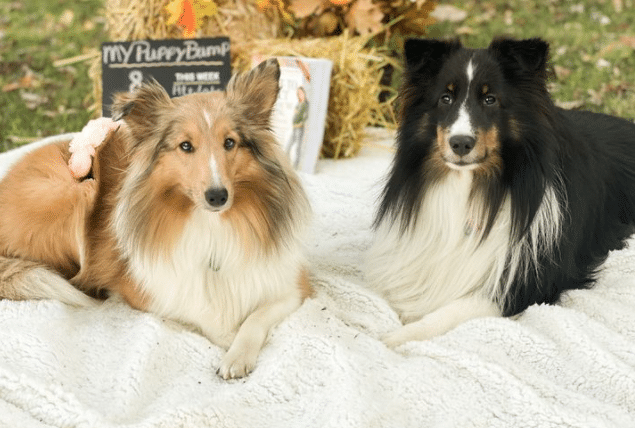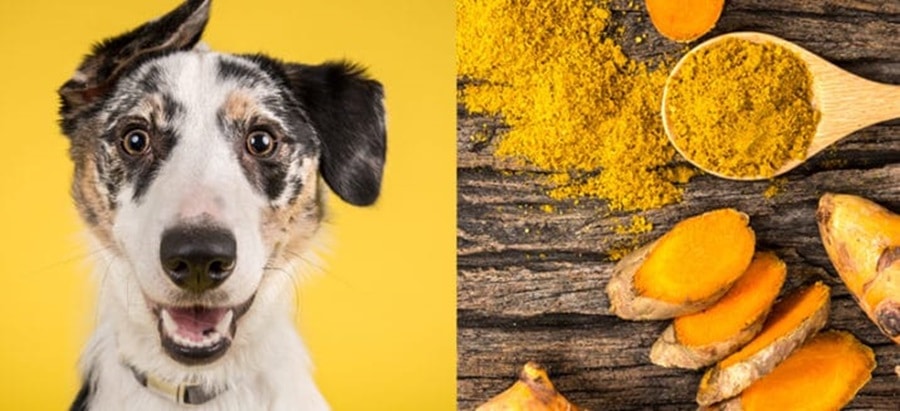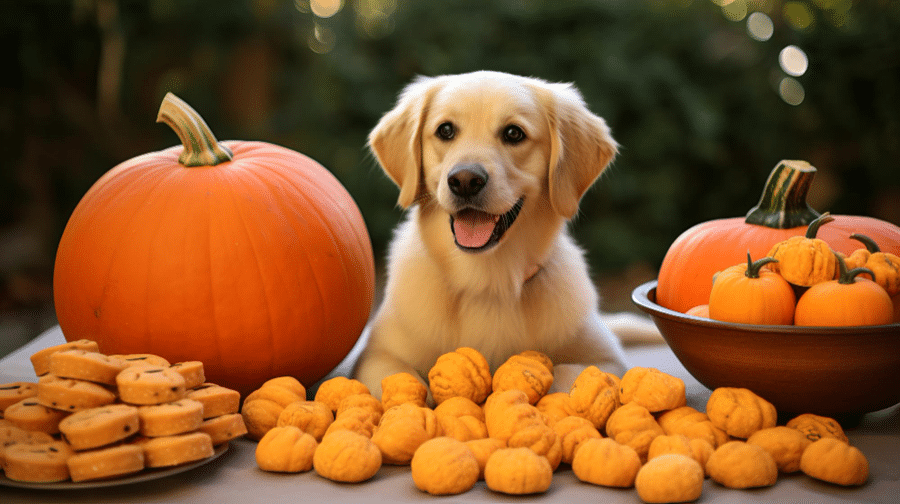The estrus cycle in dogs is also known as the stage of heat in dogs. It simply means that female dogs are capable of breeding and bearing puppies. Unless your dogs are spayed, you might have observed this phenomenon over the period and may have devised ways to tackle problems that may arise as a result. However, knowing about the signs and symptoms will help you better understand how to address them and prevent them from growing into a bigger mess!
Contents
When To Expect?

The heat period greatly depends on the breed of the dog. On average, most of them have their first heat cycle between six and fifteen months. But depending on the breed, you can even expect them as early as four months when they are just a puppy!
Small breeds come into heat as early as a few months, and the cycle may repeat as many as three times a year. In contrast, larger breeds like labradors may have to wait over 18 months to two years for their first heat, and the cycle may repeat only twice a year. The cycles take time to get regular, especially during the starting period. The cycle usually lasts for 2 to 4 weeks, in which the dog bleeds for almost 7 to 10 days.
What Does It Mean?

During the heat cycle, the animal is sexually receptive. The body gives out various signs to indicate to both the sexes that they are ready to mate.
The cycle begins with the proestrus stage, which marks the beginning of the cycle. During this stage, the body undergoes many changes like bleeding and enlargement of the vulva. These signs indicate the onset of the breeding season. This leads to the estrous cycle, where the dog becomes receptive to breeding. The ovulation occurs, and your dogs are fertile. For the breeding purpose, the dogs must mate during this period. The fertile part of the cycle ends with the diestrus cycle, where all the changes experienced in the first stage subsides completely. The final anestrous cycle is the large period of resting stage which connects two heat cycles.
Signs Given By Them

The body undergoes many changes to give symptoms and also prepare itself for subsequent breeding. Here are a few tell-tale signs that indicate that your dogs are in their estrous cycle.
- Spotting
Spotting or bloody discharges from the vulva is the most obvious sign. As the cycle proceeds into subsequent stages, the discharge changes color from dark to light hue. The discharge eventually subsides as the ovulation approaches. The discharges may be prominent in some breeds, whereas in others, it may be noticeable only several days into the cycle. The dogs take special care to keep themselves hygienic during this period, so you may or may not even notice.
- Swollen vulva
This is the earliest sign which onsets as soon as the cycle begins. The vulva becomes swollen and appears in stark red color. The degree of swelling again depends on the breed of the dog. The vulva should return to normal size after the cycle ends.
- Excessive licking of the genital region
Licking is a way to groom and keep themselves clean. The discharges from the vulva cause the dogs to lick excessively to keep themselves clean.
- Tucking the tail
During the initial phase of the cycle, the female dogs are not ready for mating. Hence, on the approach of other dogs, they cover their vulva by either using the tail or by sitting. However, as the dog approaches the period when it is receptive to dogs, this behavior subsides. They invite the males by keeping their tails away from the vulva.
- Frequent urination
When the dog becomes receptive towards the male, she lets them know by urinating. The urine releases pheromones that signal the male dogs about the reproductive viability of the female.
- Changes in the personality
The dogs experience a wide spectrum of behavior towards the opposite sex during this time. During the initial days, the dog may show aggression towards the males. As the cycle proceeds, the dog becomes more receptive to the opposite sex and approaches the male dogs. The females may also show a broad behavior spectrum towards their owners, with them sometimes being clingy and at other times being grumpy.
What Should You Do?

If you do not want to get your dogs spayed, you must prepare yourself and the home for the heat cycle.
- Though some dogs clean themselves pretty well during the discharge session, others do not. Moreover, depending on the breed, heavy discharges may be too large for the dogs to handle. Thus, be prepared for the discharges to soil your house. As a pet parent, you can use diapers to reduce the damage.
The diapers are also helpful during the period of frequent urination, protecting your household supplies from getting drenched in urine.
Depending on your preference, you can choose between reusable or disposable ones.
-
- Protect your dog from the males! The dogs are highly sensitive during the breeding season. Heightened by the hormones, the males are highly attracted to the females. Keep an eye on the dogs to ensure that the males do not surround your females if you do not want a litter.
- Show love. The heat period is a time that makes them vulnerable. With the changes in the body and the bleeding to take care of, the period may be anxious for some. Hence, make sure that the pet receives ample attention during this time. Your dog would appreciate a warm cozy bed and lots of cuddles. It is important to remember not to scold or reprimand them for the mess they make.
- Understand the temperament. Your dogs may be moody. They would want to cuddle at one time, whereas they would want alone time at the next instant. Hence, don’t force the pets for unnecessary activity and let them tide over the period.
Is Spaying A Good Option?

Spaying the pets is a decision that needs to be taken up by the pet parent. Though many claims to significantly reduce certain types of cancer and infection probability, spaying renders the pets unable to breed. Moreover, studies also indicate several other risks that may occur as a result of spaying. Hence, it entirely depends on the owner.
If you want to have a litter, later on, it is best to hold the spaying. However, if you don’t want a litter or feel that you cannot care for pets, especially during the breeding season, you can spay the pets.
There are different periods suggested for the spaying process. Consult a veterinarian to understand the pros and cons and know the best time for the procedure.
Conclusion
A dog going into the heat period requires special attention and care if you do not want to have them impregnated. Taking care of the behavioral changes and accommodating them is called a pet-parent. Understand the cycles and their behavior to make sure you know what to expect and what to do during this time!


